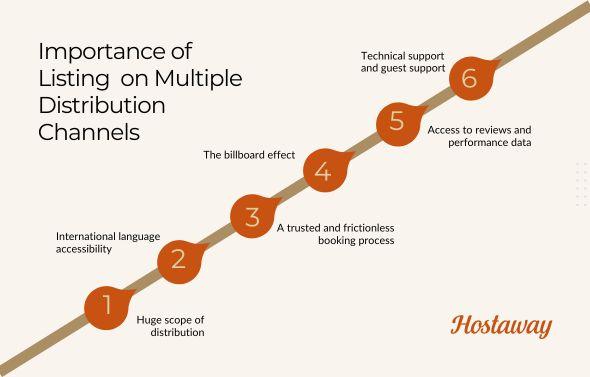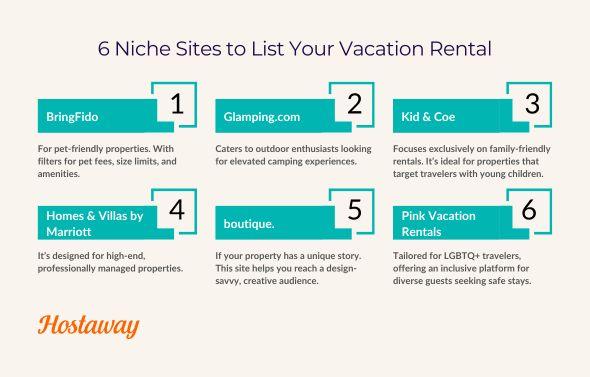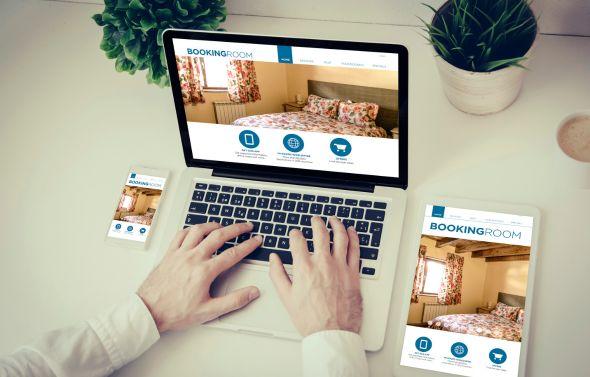How to Define your Distribution & Channel Mix

If you’re serious about growing your vacation rental business, getting your distribution strategy right isn’t optional — it’s essential. It’s no longer enough to list your property on a single OTA and wait for the bookings to roll in. Today’s guests are everywhere and if you want to stay competitive, your properties need to be where they are.
That’s where your channel mix come in. It’s all about understanding which platforms make the most sense for your rental and how to manage them in a way that saves time, boosts visibility and increases revenue.
In this article, we’ll discuss what distribution really means, how to define the right mix of channels for your rentals. Whether you're a new host or a seasoned property manager, you'll walk away with a clearer plan — and more confidence.

Importance of Listing on Multiple Channels
Listing your property on multiple OTAs is one of the simplest and most effective ways to boost your visibility and increase your booking potential. Every platform in your distribution channel mix brings a unique audience and set of features and tapping into several of them means you’re meeting more travelers where they already are.
Benefits to using these booking channels include:
Huge scope of distribution
International language accessibility
The billboard effect
A trusted and frictionless booking process
Access to reviews and performance data for fuelling unit and process improvements
Technical support and in some cases guest support and insurance
Being everywhere your guests are is no longer a nice-to-have — it’s a must.
Exploring Major and Niche Listing Sites for Your Channel Mix
When it comes to building a strong channel mix for your vacation rentals, not all channels are created equal. Some offer massive global reach, while others focus on very specific types of travelers. The smartest approach? A well-balanced mix of both.
While OTAs often get criticized for their commission fees, they can still be hugely profitable thanks to the exposure, booking volume and tools they provide. Used strategically, they can be a powerful part of your income mix — especially when combined with niche sites that help you connect with more targeted guests.
Here’s how major and niche listing sites each play a role in helping you get more bookings, reach the right guests and diversify your income streams.
Major OTAs: The power players
The big-name booking sites — Airbnb, Vrbo and Booking.com — are household names for a reason. They attract millions of travelers every month, offer powerful booking tools and provide the kind of exposure that's hard to replicate on your own.
And there’s an added bonus: being listed on a major OTA like Expedia can actually boost your direct bookings by7.5% to 26%, thanks to the “billboard effect” — where guests discover your property on an OTA, then search for your brand to book directly.
.jpg?u=https%3A%2F%2Fimages.ctfassets.net%2Fpqmtoyw9z10u%2F63Y00jEyymAAvQI5I4a9vI%2F5d959c537696f21b2709d41576ae89ec%2F6_Niche_Sites_to_List_Your_Vacation_Rental__1_.jpg&a=w%3D590%26h%3D377%26fm%3Djpg%26q%3D75&cd=2025-05-15T09%3A12%3A45.405Z)
Niche sites: Small audiences, big opportunities
While the major OTAs give you volume, niche sites offer precision. These platforms cater to specific traveler types — from families and pet owners to eco-conscious guests or luxury seekers. They might not generate the same traffic as the big players, but the visitors they attract are often highly engaged and ready to book.
Here are a few examples worth exploring:

These niche platforms allow you to stand out in a more targeted way, especially if your property has distinctive features or appeals to a specific type of guest.
Getting Started with a Multi-Channel Strategy
Whether you’re managing one property or a growing portfolio, adopting a multi-channel plan is totally achievable — and it’s one of the smartest ways to grow your bookings, reduce risk and diversify your guest base. Here’s how to do it, step by step.

Understanding your target audience
Before you choose where to list, think about who your property is really meant for. Is it perfect for families? Digital nomads? Couples on a weekend getaway? Your rental’s features and vibe will naturally speak to certain types of travelers.
Once you know who you're trying to reach, tailor your listing to them — from your photos and description to the amenities you highlight. The more your guest feels like your place is exactly what they’re looking for, the more likely they are to book — and come back.
Choosing the right channels for your Rental
Not every booking site will be a perfect fit for your property. The goal is to list where your rental naturally aligns with the platform’s audience and strengths.
Start by researching sites like Airbnb, Vrbo and Booking.com. Look at how similar properties in your area costs — this gives you insight into what works and what guests expect. Market data can also be a big help here. It can reveal which platforms perform best for your property type, whether it's a city apartment, a beachfront home or a mountain cabin.
The right channels aren’t just about reach — they’re about attracting the kind of guests who’ll love your space.

Leverage your direct booking website
OTAs are great for visibility, but your strategy isn’t complete without your own direct booking site. It’s the one channel you fully control — no commissions, no algorithms, no surprises.
A website builds trust, strengthens your brand and helps you keep more of what you earn. Plus, according to VRMA, 67% of travelers prefer booking directly through a brand’s website, making this a key growth opportunity.
The best part? It’s easier than ever to build one using modern templates like Hostaway's direct booking website templates, just plug and play, no tech skills needed. If you’re serious about growing long-term, direct bookings should be part of the plan from the start.
Use a channel manager to keep everything in sync
Managing listings across multiple platforms can quickly get messy — unless you have the right tool to keep things running smoothly. That’s where a vacation rental channel manager comes in.
A channel manager connects all your booking sites into one centralized system. When a booking comes in or a date gets blocked, your availability updates instantly across every channel. No more double bookings, no manual calendar juggling and no guest disappointments.
Hostaway’s channel manager makes this process seamless. It automatically syncs your listings in real time, helping you avoid errors, save time and protect your reputation. It’s easy to set up, works with all major OTAs and scales with your business as you grow.
If you want your multi-channel plan to actually work without the stress, a channel manager like Hostaway isn’t optional — it’s essential.

Price competitively
Setting the right price starts with understanding your market. Look at similar properties in your area — matching for size, location and amenities — to see how they're priced. Tools like Key Data can help you spot trends and position your listing competitively.
But pricing isn’t just about setting a number and sticking with it. To stay ahead, you need to be flexible — and that’s where dynamic pricing comes in.
Dynamic pricing tools adjust your rates automatically based on real-time factors like local demand, seasonality, special events and competitor activity. They help you maximize revenue during peak times and stay competitive during slower periods, without the constant manual updates.
Combining local research with smart automation is the best way to find that sweet spot between value and profitability

Your Channel Mix, Your Competitive Edge
Defining the right distribution and channel mix isn’t just a smart move — it’s a game changer. In today’s fast-moving short-term rental market, visibility, flexibility and strategic reach are what set successful hosts apart.
By listing across a variety of major and niche platforms, understanding your target guests, optimizing your listings and leveraging tools like Hostaway, you're building more than a presence — you’re building a scalable, future-proof business.
Your ideal guests are out there, searching across different platforms, at different price points, with different needs. When your rental meets them where they are, bookings follow.
So, whether you're just getting started or looking to level up, now’s the time to take control of your distribution — and unlock the full potential of your short-term rental business.
Ready to find out how Hostaway can transform your business?
